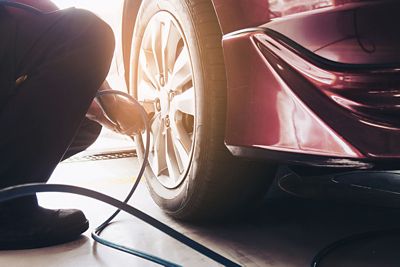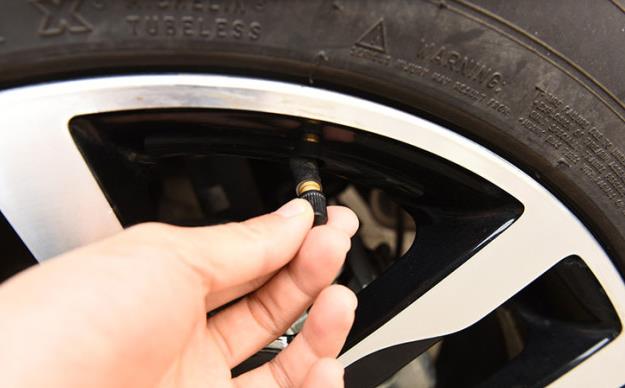Nitrogen vs Oxygen: What's the Difference
Benefits of Nitrogen Tires
The rubber compounds in tires have microscopic pores through which eventually air and nitrogen will seep. However, nitrogen molecules are larger, so it will take longer for your tires to lose a noticeable amount of pressure when inflated with nitrogen. Exactly how much longer depends upon your set of tires. According to the US Tire Manufacturers Association (USTMA), a tire can lose as much as 1 to 2 psi inflation pressure per month under normal conditions.
To put that in perspective, under inflated tires can decrease your gas mileage by about .03% for every 1 PSI drop in the average pressure of all tires, according to the Environmental Protection Agency. So, whether you're interested in going green, want to save some money by increasing your tire's treadlife and protecting your gas mileage, nitrogen inflation is a service to consider.
A secondary reason that nitrogen inflation is catching on — despite the cost — has to do with preserving one's tires and Tire Pressure Monitoring System components. One of the key contributors to tires and TMPS components deteriorating is moisture. Moisture in a tire's air can lead to rubber compounds cracking, steel belts rusting and corrosion of the metal components of the TPMS units mounted inside of a tire. Temperature changes in tires due to usage can cause different types of unfavorable decreases in performance.
Cost of Nitrogen inflation for Tires
Prepared to counter that point are people who say you just need to check your tire pressure once a month. Most tire retailers will check it for free, or you can buy a tire pressure gauge and check it yourself. Topping off your tires with good old-fashioned air is certainly the easiest and least expensive option.
Nitrogen inflation has grown, but is not available everywhere . So, while some tire retailers do offer nitrogen filling, these options may be few and far between, depending on where you live. The cost may also vary. Tire retailers may fill newly purchased tires with nitrogen for free, but otherwise there may be a small cost per tire.
The use of nitrogen is already standard practice for inflating the tires of race cars. As an inert gas, Nitrogen exhibits less change in pressure during the intense temperature shifts during a race. Nitrogen is also used in airplane tires for the same reason, keeping an airplane's tires properly inflated despite huge changes in elevation, temperature, and external air pressure.
The technology has naturally made its way into the world of sports car enthusiasts, who want a top-level driving experience. And for collectors, nitrogen-inflated tires allow your vehicles to stay road ready while stored over long periods of time.
If you're into cars and you want the absolute best, then nitrogen has obvious advantages. It's all about what best suits your needs.
Previous: Original Equipment vs Replacement Tires
Next: Nitrogen Tire Inflation

























